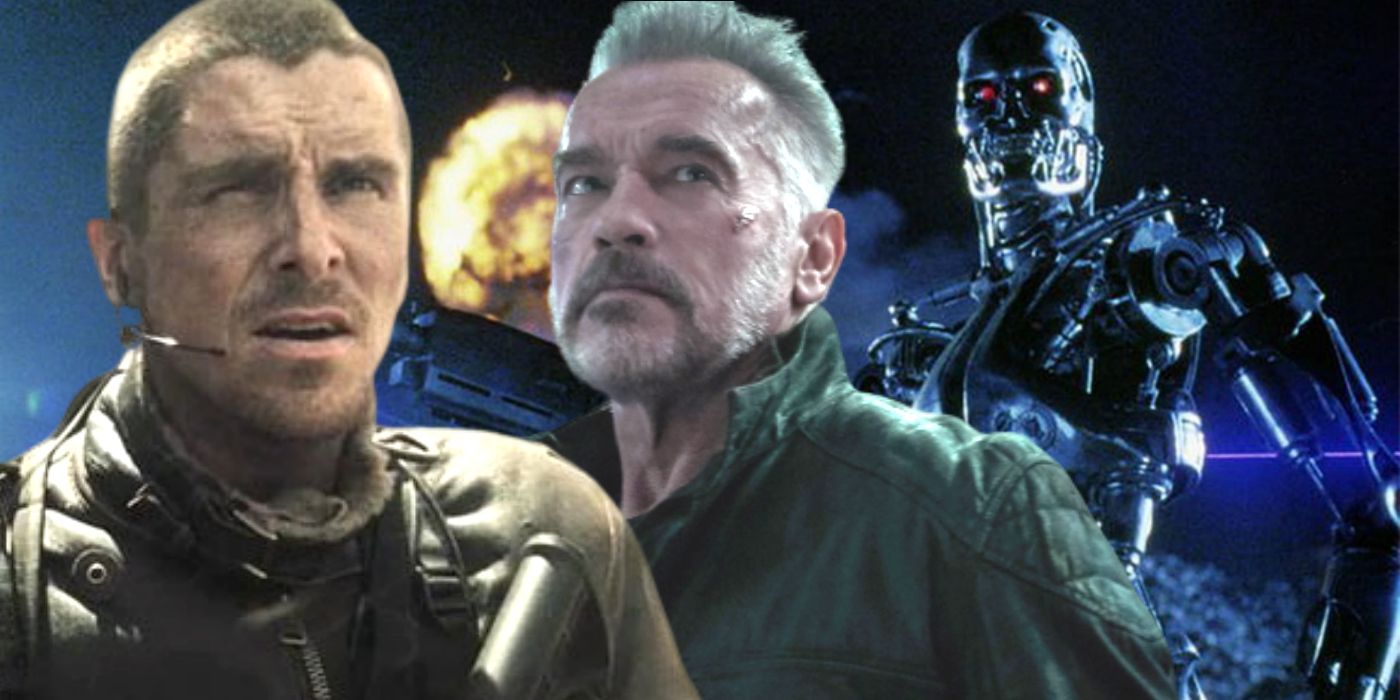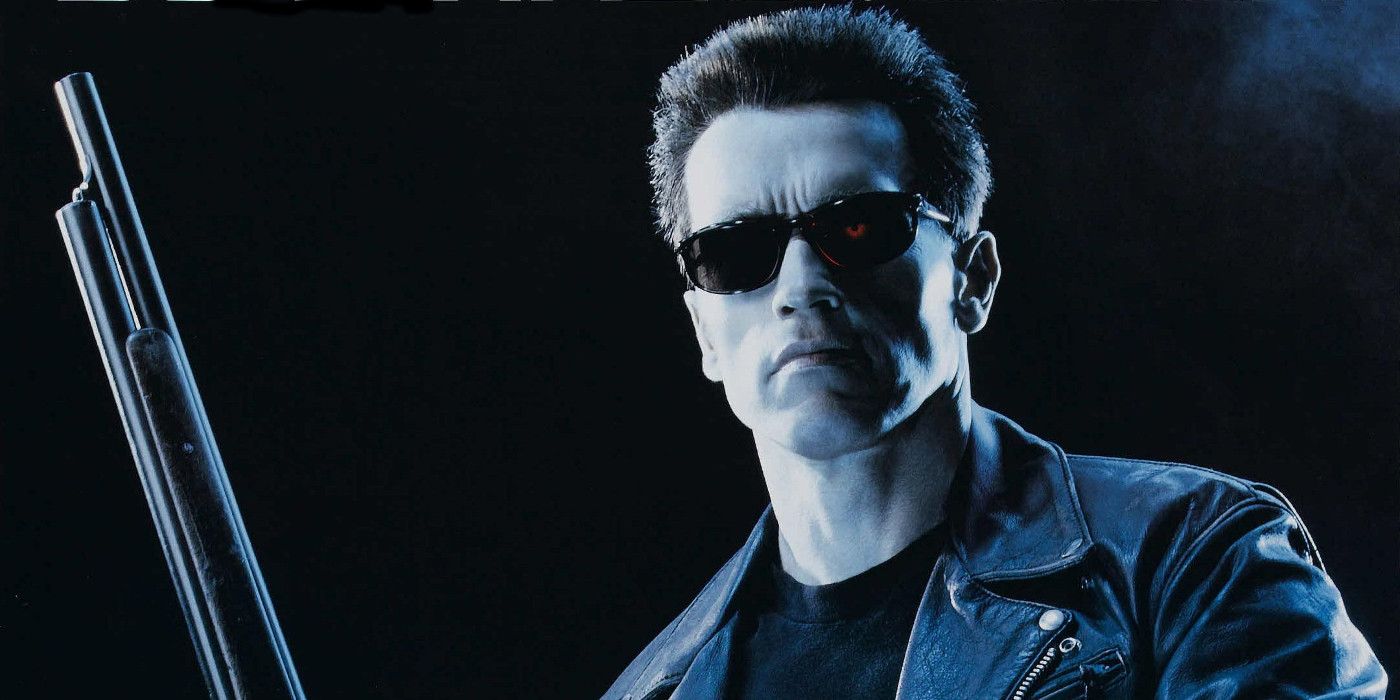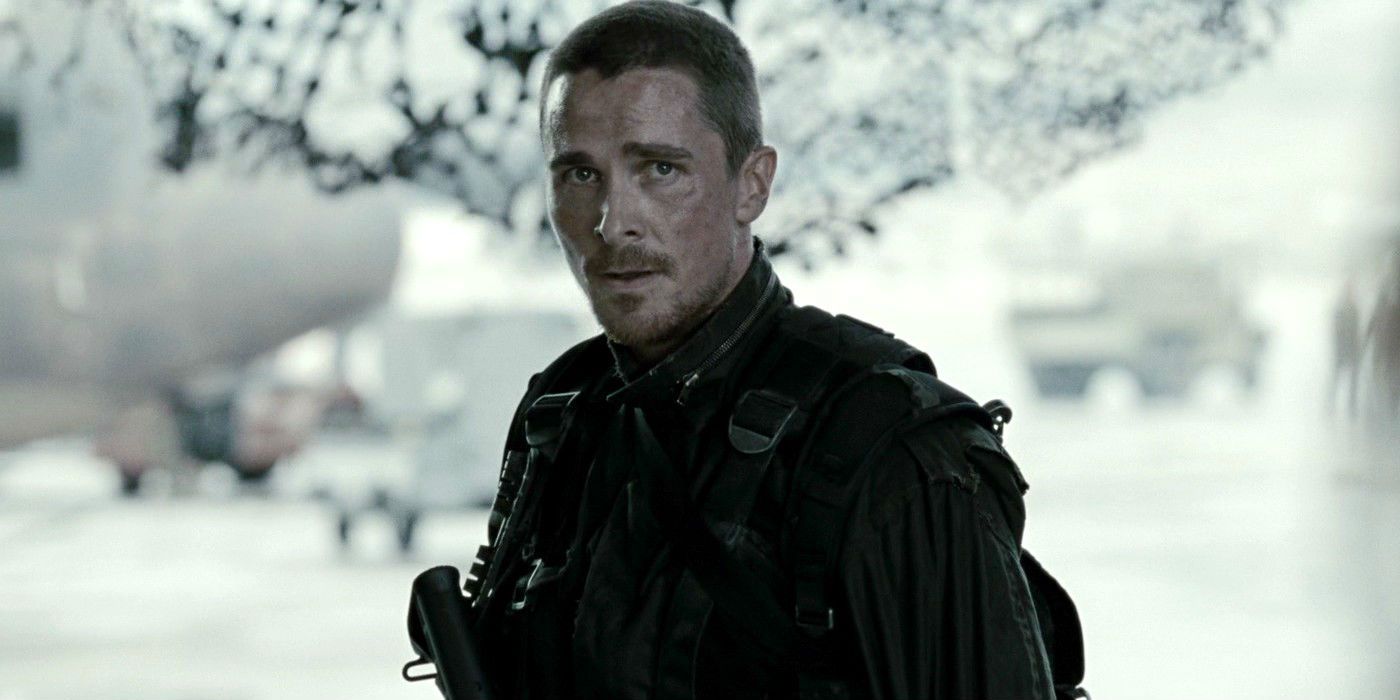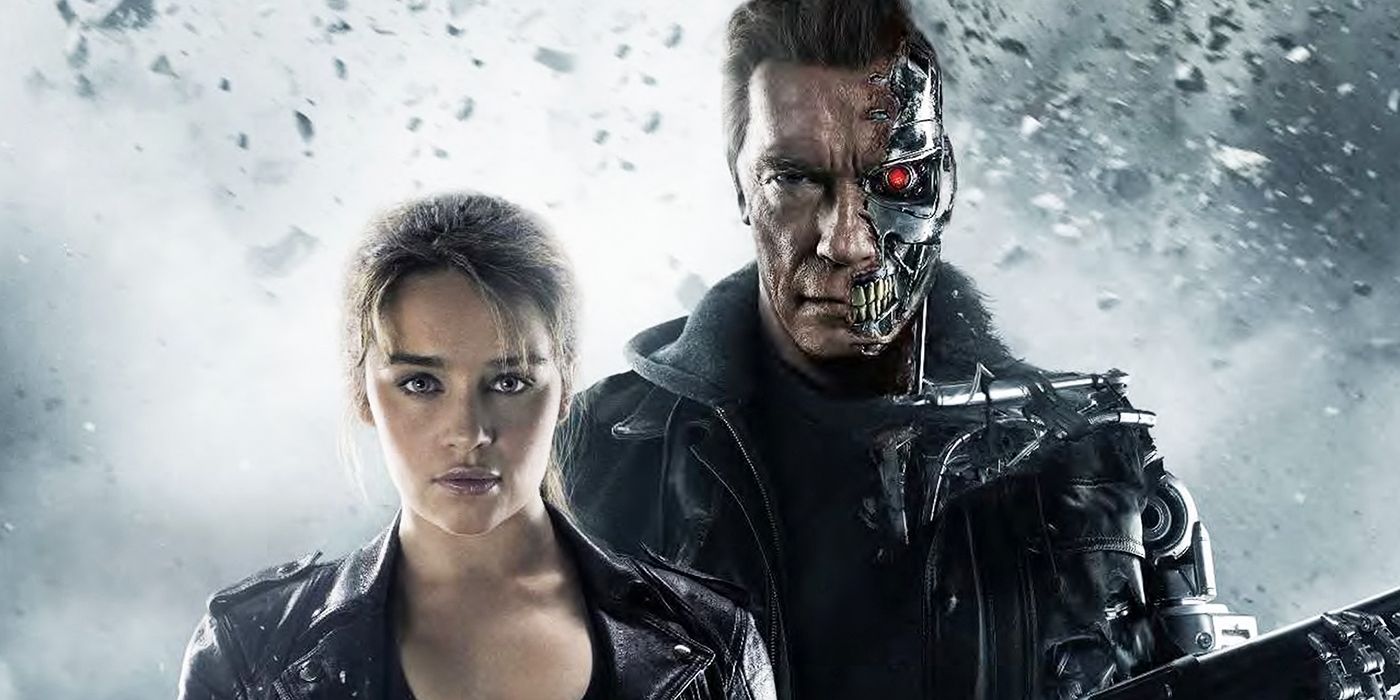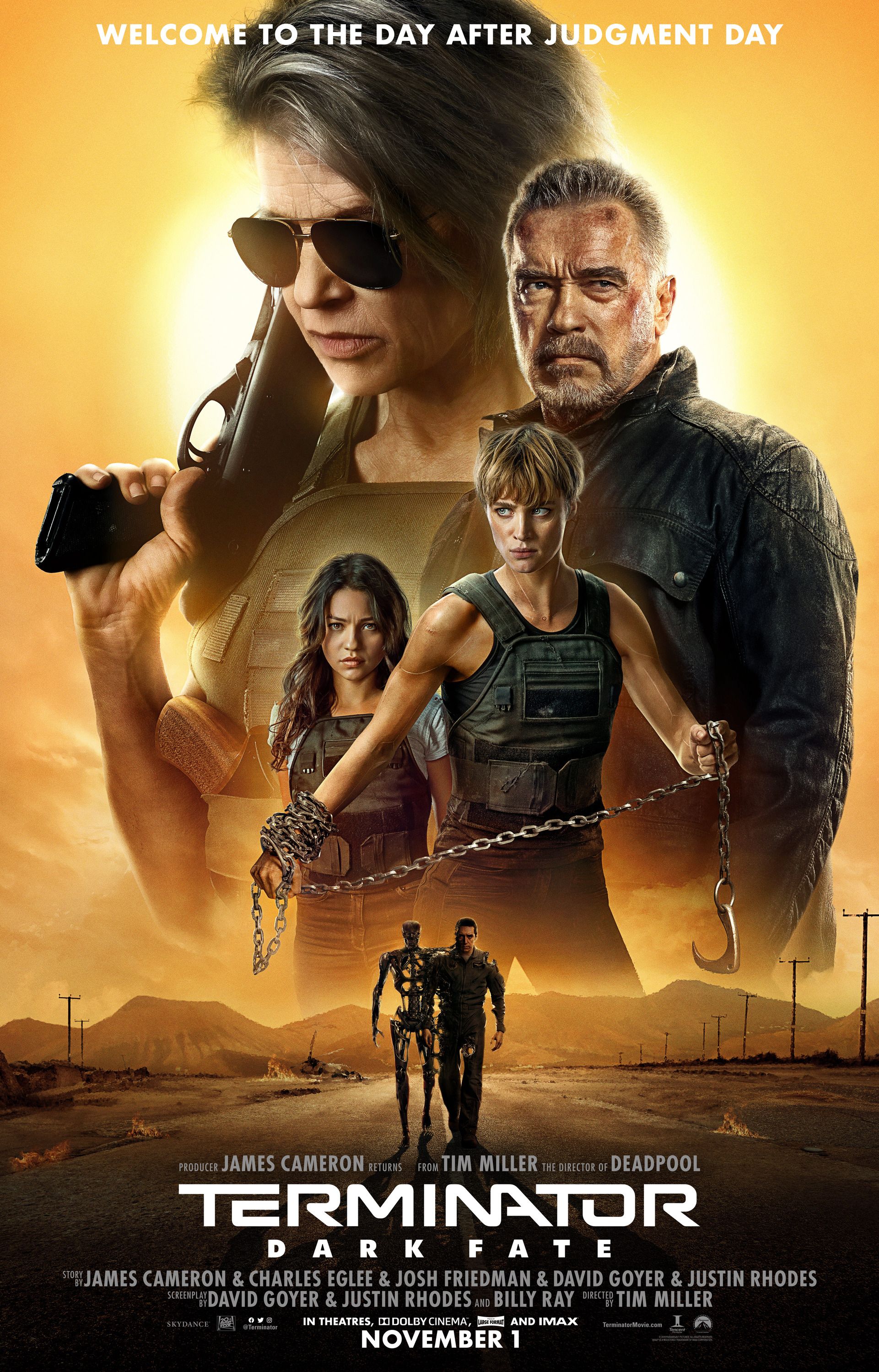Like all good sci-fi epics, Terminator loves time travel, but this has led to a number of different timelines across the series. The nonlinear concept of moving between two points in time is perhaps the franchise’s most important plot device. Not only is time travel the reason for almost everything that happens in the Terminator universe, but it’s the scapegoat writers have to turned to time and time again (pun) to explain nonsensical shifts in its narrative.
The Terminator introduced us to Sarah Connor (Linda Hamilton), the would-be mother of humanity’s savior in a war against machines. Sarah spends the entire movie evading a cyborg assassin, or Terminator (Arnold Schwarzenegger) which has sent back in time to kill her before she ever gives birth to her son, John. Also sent back in time, by John Connor himself is Kyle Reese (Michael Biehn), who tells Sarah about her son and his tumultuous future. Since that movie, the how, when and why of John Connor’s future has been retconned to death.
The Terminator saga’s original mastermind was James Cameron. After serving as a writer and director of the first two of installments, Cameron left the franchise to pursue other projects, and the subsequent third, fourth, and fifth Terminator movies all retconned various aspects of the timeline. The latest outing, Terminator: Dark Fate, is set to change the way we interpret the war against Skynet once again. With Cameron back as a producer, and Schwarzenegger reuniting with Hamilton, this fifth entry is taking us back in time, literally, before the events of the Cameron-less entries—making the timeline even more complicated (and pointless). Here's every timeline in Terminator, and how they've changed.
The Original Terminator Timeline (Terminator & T2: Judgment Day)
As previously stated, 1984’s The Terminator introduced us to all of the main players: Sarah Connor, Kyle Reese, Skynet, the T-800 and John Connor (sort of). In the year 2029, right before John, his second in command Reese, and fellow resistance members can ensure their victory against the machines, Skynet sends the T-800 (sporting an added layer of human tissue) back in time to murder Sarah before she can conceive/give birth to John - preventing the formation of the resistance. John sends Reese back in time as well to prevent this murder mission from being successful.
The biggest reveal in the first film shows its paradoxical head when Sarah and Reese fall in love and, ultimately, conceive John Connor himself. The two are able to destroy the T-800 courtesy of pipe bombs and a hydraulic press but not before Reese dies in the explosion. The movie ends with a pregnant Sarah recording message to her unborn son, informing him of his father and the war to come. The use of time travel here is just ironic. Skynet is the reason for John Connor existence in the first place; if Kyle Reese never gets sent back in time, John is never born. The Terminator’s use of time travel makes the most sense in the entire series, as any and all time travel that takes place merely reinforces events that were always going to happen anyway, making it a predestination paradox, or closed time loop.
1991’s Terminator 2: Judgment Day picks up 11 years after the events of the first film and finds Sarah Connor in a mental institution. A 10-year-old John Connor (Edward Furlong) is with his foster parents when another Terminator, made out of liquid (T-1000) appears to try and kill John. Fortunately, future John also sent something back to protect himself, but this time instead of sending back another human member of the resistance, he sends back a reprogrammed T-800 (Arnold Schwarzenegger).
The T-800 reveals that the Terminator’s arm from the first film was discovered by Cyberdyne Systems, laying the groundwork for Skynet’s creation, with Judgement Day supposed to happen in 1997. They break Sarah out and attempt to destroy a chip that was left behind from the Terminator in the first film all while dealing with the T-1000 and teaching the T-800 how to love. They succeed in all of the above and the film ends with the future being uncertain - the apocalypse seemingly averted, but making a change from the first film's more closed ending.
The Shifting Terminator Timeline (Terminator 3: Rise of the Machines & Salvation)
Surprise, surprise, the apocalypse was not averted, merely delayed. 2003’s Terminator 3: Rise of the Machines finds John Connor in 2005, now 25-years-old living the life of a shadow; Sarah has since passed away. Another Terminator (T-X) is sent back in time by Skynet to find and kill top members of the resistance. These members include John (Nick Stahl) and his future wife, Kate Brewster (Claire Danes). Thankfully, future Kate sent another T-800 (Arnold Schwarzenegger) to protect them.
The T-800 tells the couple that the end is nigh; the entire film is spent battling the T-X and trying to prevent Judgment Day once again. They do not. The movie ends with the villainous AI bombing the planet while John and Kate embrace their leadership roles in a bunker. We are left feeling like it was all going to happen no matter what and the whole story is one big time-traveling circle.
2009’s Terminator Salvation finds us smack dab in the middle of the foretold apocalyptic future. Although John and Kate are portrayed by different actors (Christian Bale and Bryce Dallas Howard respectively), it’s safe to assume this film takes place after T3 (the setting being 2018). This film also introduces the character of Marcus Wright (Sam Worthington), a death row inmate who has been turned into a cyborg by Cyberdyne Systems. Over the course of this narrative, we find out that Skynet is aware of the biological connection between Kyle Reese (Anton Yelchin) and John Connor (why send the Terminator back in 2029 at all then?) and that Marcus was augmented in order to lure John into a trap (but he ultimately ends up saving him). Beyond that, the timeline remains relatively stable upon the film's conclusion.
The Rewritten Terminator Timeline (Terminator Genisys)
2015’s Terminator Genisys attempted to really have fun with the timelines. Completely ignoring the events of Terminator Salvation, Genisys tried to reboot the franchise. The film begins in 2029, right before John Connor (Jason Clarke) and the resistance can defeat Skynet. As foretold to death, Skynet sends a T-800 back to 1984 to kill Sarah. When John and the resistance hear about this, Kyle Reese (Jai Courtney) volunteers to travel back in time and protect Sarah (Emilia Clarke). While Kyle is being transported trough time and space, we see John attacked by another resistance member.
When Kyle arrives in 1984, he finds that the T-800 has already been disabled by Sarah and “Pops” (Arnold Schwarzenegger) another T-800 that has been reprogrammed to protect Sarah. It is then revealed that Sarah and Pops have made their own time machine so that they can stop Skynet from becoming self-aware in 1997. Kyle, recognizing that the timeline has been changed, suggests (for some reason) that they go to 2017 - the day before Skynet goes online.
In 2017, they find that Skynet is now called Genisys. They are confronted by the John Connor from the future who is now controlled by nano-machines. It is revealed that when John was attacked earlier in the film, Skynet turned him into a T-3000. John’s mission is to help with the development of Genisys and ensure Skynet’s survival. Kyle, Sarah and Pops fight the John/T-3000 hybrid, escape and set out to destroy Cyberdyne’s Genisys mainframe.
The trio is successful in bombing the Cyberdyne facility and escape to Kyle’s childhood home. Kyle runs into his younger self and tells him to memorize a warning (in order to ensure Kyle’s previous suggestion of traveling to 2017). The film ends much in the same way as Terminator 2: Judgment Day; it essentially resets the timeline and leaves the future uncertain (besides a mid-credits’ scene indicating Genisys’ survival). Perhaps Terminator Genisys biggest mysterious revolves around Pops — who sent him back? Terminator Genisys was meant to be the start of a new trilogy (much like Terminator Salvation). Had the story continued would have most likely divulged Pops’ backstory (a Skynet double agent maybe?). However, similarly to the sequels that came before it, Terminator Genisys never found the critical or commercial footing of the franchise’s first two installments.
The New Terminator Timeline (Terminator: Dark Fate)
The series’ newest entry, Terminator: Dark Fate ignores most Terminator movies, tossing everything beyond Terminator 2: Judgment Day out the window. With James Cameron back on as a producer, it seems fitting that a movie reuniting the original film’s cast (Linda Hamilton as Sarah Connor and Arnold Schwarzenegger as the T-800), would only pay homage to the first two installments. That being said, Dark Fate will introduce hybrid cyborg woman (Mackenzie Davis) to protect people from, you guessed it, Terminators.
Dark Fate aims to remain faithful to what made the franchise’s original installments so great; the timeline from the first two Terminator movies remains intact and the pivotal 2029 milestone (when the original T-800, and Kyle Reese are sent back for Sarah Connor) is the only future event worth remembering. It remains to be seen if Dark Fate’s simplified/updated timeline sticks or if somewhere down the line we’ll have to start all over again (but hey, that’s Hollywood and that’s time travel).

